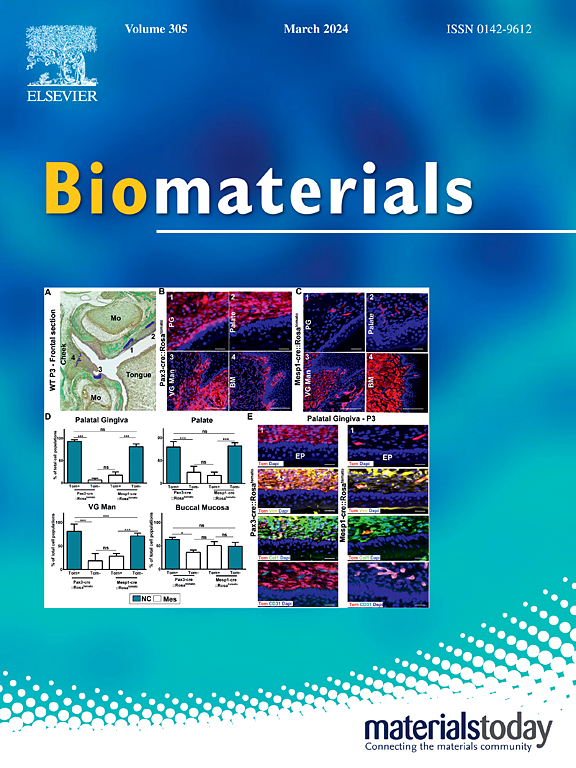Time-resolved T1 and T2 contrast for enhanced accuracy in MRI tumor detection
IF 12.8
1区 医学
Q1 ENGINEERING, BIOMEDICAL
引用次数: 0
Abstract
Stimuli-responsive contrast agents (CAs) have shown great promise in enhancing magnetic resonance imaging (MRI) for more accurate tumor diagnosis. However, current CAs still face challenges in achieving high accuracy due to their low specificity and contrast signals being confounded by potential endogenous MRI artifacts. Herein, an extremely small iron oxide nanoparticle (ESIONP)-based smart responsive MRI contrast agent (LESPH) is proposed, which is meticulously designed with sequential dual biochemical stimuli-initiated, time-resolved T1 and T2 contrast presentation, ensuring high tumor specificity while minimizing interference from endogenous artifacts. LESPH is constructed using emulsion solvent evaporation by assembling poly(2-(hexamethyleneimino) ethyl methacrylate) terminally conjugated with a disulfide bond-linked catechol group (DSPH)-modified ESIONPs, with lauryl betaine serving as a surfactant. When LESPH undergoes sequential responses to the weak acidity and high-concentration glutathione (GSH) in the tumor microenvironment, it experiences an extremely rapid transition from sparse ESIONP assemblies to dispersed ESIONPs, followed by a slower transition to closely aggregated ones, concomitantly providing distinguishable brightening and darkening contrast enhancement at the tumor location on different time scales. By virtue of its sequential dual responsiveness and time-resolved distinguishable contrast enhancements, LESPH successfully detects tumors with extremely high accuracy, providing a novel paradigm for the precise medical diagnosis of cancer.

求助全文
约1分钟内获得全文
求助全文
来源期刊

Biomaterials
工程技术-材料科学:生物材料
CiteScore
26.00
自引率
2.90%
发文量
565
审稿时长
46 days
期刊介绍:
Biomaterials is an international journal covering the science and clinical application of biomaterials. A biomaterial is now defined as a substance that has been engineered to take a form which, alone or as part of a complex system, is used to direct, by control of interactions with components of living systems, the course of any therapeutic or diagnostic procedure. It is the aim of the journal to provide a peer-reviewed forum for the publication of original papers and authoritative review and opinion papers dealing with the most important issues facing the use of biomaterials in clinical practice. The scope of the journal covers the wide range of physical, biological and chemical sciences that underpin the design of biomaterials and the clinical disciplines in which they are used. These sciences include polymer synthesis and characterization, drug and gene vector design, the biology of the host response, immunology and toxicology and self assembly at the nanoscale. Clinical applications include the therapies of medical technology and regenerative medicine in all clinical disciplines, and diagnostic systems that reply on innovative contrast and sensing agents. The journal is relevant to areas such as cancer diagnosis and therapy, implantable devices, drug delivery systems, gene vectors, bionanotechnology and tissue engineering.
 求助内容:
求助内容: 应助结果提醒方式:
应助结果提醒方式:


